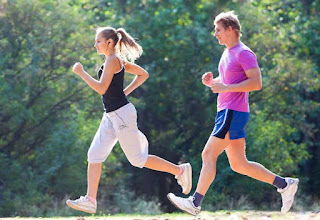Before we dive into how to reduce obesity, take a moment to learn about the health related issues of obesity
Obesity is a complex, multifactorial condition characterized by an excessive accumulation of body fat that poses a risk to health. It is commonly measured using Body Mass Index (BMI), where a BMI ≥30 kg/m² is classified as obese.
Obesity significantly increases the risk of numerous health conditions, including:
1. Cardiovascular Diseases
Hypertension (High Blood Pressure)
Coronary artery disease
Heart failure
Stroke
Excess fat leads to increased vascular resistance and altered lipid metabolism.
2. Type 2 Diabetes Mellitus
Obesity, especially central (abdominal) obesity, is a major risk factor.
It causes insulin resistance and impaired glucose metabolism.
3. Metabolic Syndrome
A cluster of conditions including obesity, hypertension, hyperglycemia, and dyslipidemia.
Increases risk of cardiovascular disease and diabetes.
4. Certain Cancers
Increased risk for cancers such as:
Breast (postmenopausal)
Colorectal
Endometrial
Kidney
Esophageal adenocarcinoma
5. Musculoskeletal Disorders
Osteoarthritis (especially knees, hips, and lower back)
Due to increased mechanical load on joints.
6. Respiratory Disorders
Obstructive sleep apnea
Obesity hypoventilation syndrome (Pickwickian syndrome)
Asthma
7. Reproductive and Hormonal Issues
Polycystic ovary syndrome (PCOS)
Infertility
Erectile dysfunction
Pregnancy complications (gestational diabetes, preeclampsia)
8. Mental Health Conditions
Depression
Anxiety
Low self-esteem and social stigma
9. Liver Disease
Non-alcoholic fatty liver disease (NAFLD)
Can progress to cirrhosis or hepatocellular carcinoma
How to reduce obesity
Reducing obesity involves long-term lifestyle changes supported by behavioral, medical, and sometimes surgical interventions. The approach should be sustainable, individualized, and multi-pronged. Here's a structured breakdown:
1. Dietary Modifications
Caloric Deficit: Consume fewer calories than you expend.
Balanced Diet:
High in fruits, vegetables, whole grains, and lean proteins
Low in sugar, saturated fats, and refined carbohydrates
Portion Control: Avoid oversized portions.
Mindful Eating: Eat slowly and avoid distractions (like TV).
2. Physical Activity
Aerobic Exercise: At least 150–300 minutes/week of moderate-intensity (e.g., brisk walking, cycling). This amount to 30 minutes to 1 hour of exercise at least 5 times a week
Strength Training: At least 2 days/week (e.g., weights, resistance bands)
Reduce Sedentary Time: Limit screen time; incorporate standing or walking breaks.
3. Behavioral Therapy
Self-monitoring: Keep food and activity logs
Goal-setting: Set SMART (Specific, Measurable, Achievable, Relevant, Time-bound) goals
Cognitive Behavioral Therapy (CBT): Helps change eating patterns and emotional responses
4. Medical Management
For BMI ≥30, or ≥27 with comorbidities
Prescription weight-loss medications (under physician supervision):
5. Bariatric Surgery
Considered for:
BMI ≥40, or
BMI ≥35 with serious health issues (e.g., type 2 diabetes)
6. Support Systems
Join support groups or weight-loss programs
Engage family and friends for encouragement
Use mobile apps for tracking and motivation
7. Public Health and Environmental Changes
Promote healthy food environments (e.g., reducing fast food density)
Implement workplace wellness programs
Support physical activity through community infrastructure (e.g., parks, walking trail
Seek Medical support when appropriate
Kindly like and share Post.
.jpeg)
.jpeg)
.jpeg)







